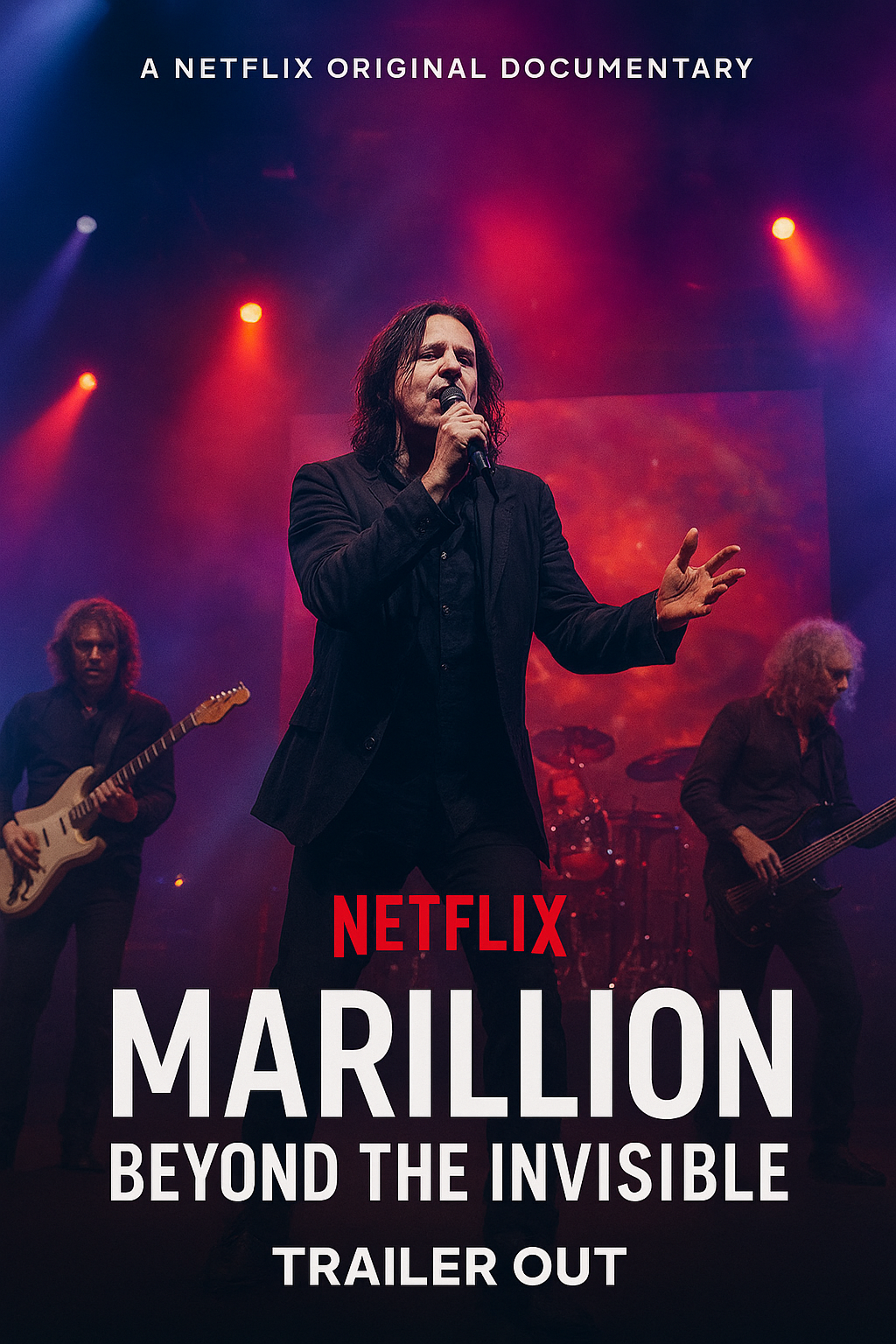
Marillion, one of progressive rock’s most enduring and innovative bands, is finally receiving the deep-dive recognition they deserve in a brand-new Netflix documentary series set to explore their remarkable journey. Known for their poetic lyrics, complex soundscapes, and fiercely loyal fanbase, Marillion’s story is one of persistence, creativity, and a unique relationship between band and audience that has redefined what it means to survive in the ever-evolving music industry. The series promises to take viewers through every era of their four-decade career, capturing both their triumphs and their struggles.
The documentary, titled “Marillion: Beyond the Invisible,” traces the band’s origins in the early 1980s, when they emerged from the UK’s neo-progressive rock scene with theatrical frontman Fish leading the charge. With early albums like Script for a Jester’s Tear and Fugazi, Marillion carved out a distinctive sound that echoed the grandeur of 1970s prog icons while adding their own emotional depth and storytelling finesse. The series explores how these formative years shaped the band’s musical identity and how their early success catapulted them into the spotlight with the 1985 classic Misplaced Childhood.
Through archival footage and newly conducted interviews, viewers will witness the highs of fame and the internal pressures that came with it. Fish’s departure from the band in 1988 could have spelled the end for Marillion, but as the documentary shows, it became the start of a new era. The arrival of vocalist Steve Hogarth transformed the group’s dynamic, giving birth to an entirely different yet equally powerful sound. Netflix’s production delves into how this pivotal transition tested the band’s resilience and creativity, ultimately solidifying their reputation as one of rock’s most adaptable acts.
Each episode dives into a specific chapter of Marillion’s evolution, from their early battles with record labels to their later embrace of independence and direct fan engagement. The documentary highlights their groundbreaking move in 1997, when fans helped fund the band’s tour through online contributions—an act that predated the modern crowdfunding model by years. This moment is portrayed as one of the most defining in their career, marking Marillion as pioneers not just musically, but culturally.
The cinematography and production style of “Marillion: Beyond the Invisible” reflect the same atmospheric and emotional tone that the band is known for. Dark concert halls, vivid light shows, and intimate behind-the-scenes moments are woven together with narration from both current and former members. The result is a deeply personal portrayal of musicians who have weathered every storm the industry could throw at them while maintaining a sense of integrity and artistic purity.
Fans can also expect to hear from notable figures influenced by Marillion’s music—artists from across generations who cite the band’s experimentation and authenticity as an inspiration. Interviews with figures like Steven Wilson, Neal Morse, and members of Dream Theater add depth to the narrative, placing Marillion’s legacy within the broader tapestry of progressive rock’s history.
One of the most emotionally charged segments focuses on the band’s bond with their fans. The documentary reveals heartwarming stories of how Marillion’s fan community, often referred to as “The Web,” helped the band survive financially and spiritually through difficult times. It also shows the global reach of their music, capturing fans from Europe to South America whose lives have been touched by the band’s lyrical honesty and melodic power.
The filmmakers behind “Marillion: Beyond the Invisible” have reportedly spent over two years gathering footage, conducting interviews, and piecing together rare archival materials. This meticulous approach ensures that even the most devoted fans will discover something new about the band’s creative process, relationships, and the emotional depth behind their albums. Each frame reflects a labor of love—an homage to a group that has remained steadfastly authentic in an industry obsessed with trends.
Adding to the anticipation is the inclusion of unseen studio sessions and concert footage from across decades, including iconic performances at the Royal Albert Hall and Utrecht. The soundtrack will naturally be composed of remastered Marillion tracks, some of which have been newly mixed specifically for the series, immersing viewers in the lush, layered sound that defines their art.
The documentary is set to premiere globally on June 14, 2026, exclusively on Netflix. The release date aligns with the anniversary of Misplaced Childhood, paying tribute to the album that first cemented their place in rock history. Fans around the world are already marking their calendars, eager to relive the journey and gain new insights into the band’s enduring magic.
Critics and insiders who’ve previewed early cuts of the series are calling it one of Netflix’s most musically sophisticated documentaries to date. Its tone balances nostalgia with fresh perspective, presenting Marillion not just as a band, but as a symbol of perseverance in art. The documentary underscores how their journey mirrors the evolution of modern music itself—shifting from label dominance to artistic independence through fan-powered connection.
As anticipation builds, “Marillion: Beyond the Invisible” is shaping up to be more than just a documentary—it’s a celebration of survival, creativity, and community. It’s a testament to a band that never stopped believing in their craft, even when the industry did. Whether you’re a lifelong fan or a newcomer to their world, this Netflix series promises to remind everyone why Marillion remains one of the most respected, yet underrated, forces in the world of rock.



